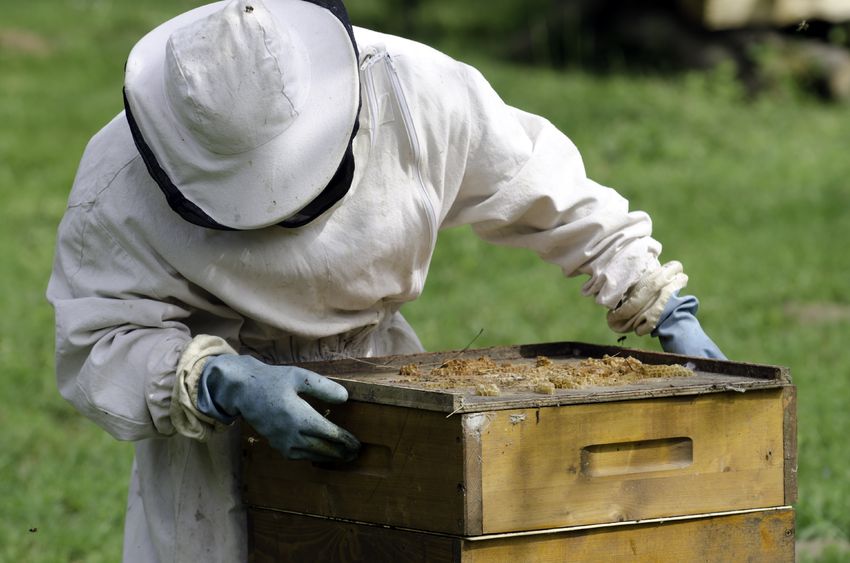To achieve success in beekeeping and maximize your yields, it is important to understand various crucial aspects. Aside from the quality of beehives, factors such as location, swarming, bee population, and effective bee attraction methods play significant roles. This article will provide you with valuable insights on starting and excelling in bee farming.
- Selecting the Right Apiary Location
Selecting the right apiary location is crucial for the success of your beekeeping venture. It involves finding a suitable area where your beehives will thrive and have access to essential resources. Here are some key points to consider when choosing the right apiary location
- Nectar and Water Availability: Bees require a reliable source of nectar to produce honey. Look for locations with abundant flowering plants and vegetation, as they indicate the availability of nectar. Forested areas often provide a diverse range of nectar-producing plants. Additionally, having a water source nearby is important for the bees. They need water for cooling the hive, diluting honey, and maintaining hive humidity. If there is no natural water source close to your chosen location, you can provide water for the bees by placing plates filled with water and a sponge on top for them to land on and drink.
- Climate and Microclimate: Consider the climate conditions of the region where you plan to establish your apiary. Bees thrive in moderate climates with a good balance of temperature and humidity. Extreme heat or cold can stress the bees and impact their productivity. Also, pay attention to the microclimate of the specific location within the larger region. Factors such as shade, wind patterns, and exposure to elements can influence the well-being of your hives.
- Accessibility and Safety: Choose a location that is easily accessible for hive inspections, maintenance, and honey extraction. You should be able to reach the apiary without difficulty and have enough space to work around the hives comfortably. Additionally, consider the safety of the location. Ensure that the apiary is away from high-traffic areas, livestock that may disturb the bees, or potential sources of chemical contamination.
- Land Ownership and Permissions: Determine the ownership of the land where you plan to establish your apiary. If it is your own property, you have more control and flexibility. However, if you plan to place hives on someone else’s land, make sure to seek permission from the landowner and discuss any potential agreements or requirements.
- Surrounding Vegetation and Pesticide Use: Assess the vegetation surrounding the location. Having a diverse range of flowering plants nearby will provide a consistent and varied nectar source for the bees. Avoid areas with extensive pesticide use, as it can be harmful to the bees and affect the quality of honey. Consider talking to neighboring farmers or landowners to understand their pesticide practices and discuss any concerns.
- Feeding Bees and Attraction Techniques
- Feeding: If you place hives in forests, natural nectar sources may suffice. However, in dry climates or if you require a quick honey harvest, it is advisable to feed the bees. Provide watermelon, pineapple, or other fruits directly on top of the beehives. Alternatively, consider planting sunflowers on your farm to provide nectar.
- Bee Attraction: Spread out your hives in the apiary instead of crowding them in one place. This increases the chances of attracting the best and strongest swarms. Bait the hives to attract swarms by applying wax mixed with bee glue (propolis) inside and at the entryway of the hive. Timing is crucial, and the well-baited hive should be placed in the forest at the beginning of the swarming season.
- Choosing the Right Hives and Housing Structure
Consider using modern hives like the Longstroth, which consists of a lower brooder section for the queen and an upper super section for honey storage. Construct a shelter on top of the hives using materials such as iron sheets or timber. Create a chimney-like structure for bees to enter and exit.
- Proper Hive Placement
Spread your hives across the apiary rather than clustering them together. This enhances the likelihood of attracting and occupying the best swarms. Grease the hives and place them on metal stands to keep pests away, as pests can cause the bees to abandon the hives.
- Understanding Swarming and Bee Colonization
Attracting the primary swarm is crucial for maximizing honey production. Swarming occurs when bees produce a new queen, and a portion of the worker bees accompanies the old queen to form a new colony. Baiting the hives before the swarming season increases the chances of attracting the largest and strongest swarms.
- Troubleshooting Bee Colonization
If your hives are not colonized, you can reapply bee attractants or use lemongrass oil as a substitute. Honey and old honeycombs can also attract bees. If colonization does not occur, clean the hive to eliminate pests and reapply the attractant every two weeks. Additionally, consider using bee trappers, smaller versions of beehives that can be hung up and transported easily.
Conclusion
Remember, becoming a successful beekeeper requires dedication, patience, and a deep respect for the intricate workings of these fascinating creatures. With the right knowledge and a passion for beekeeping, anyone can embark on a fulfilling journey and enjoy the many rewards that come with nurturing and caring for honeybees.






0 Comments